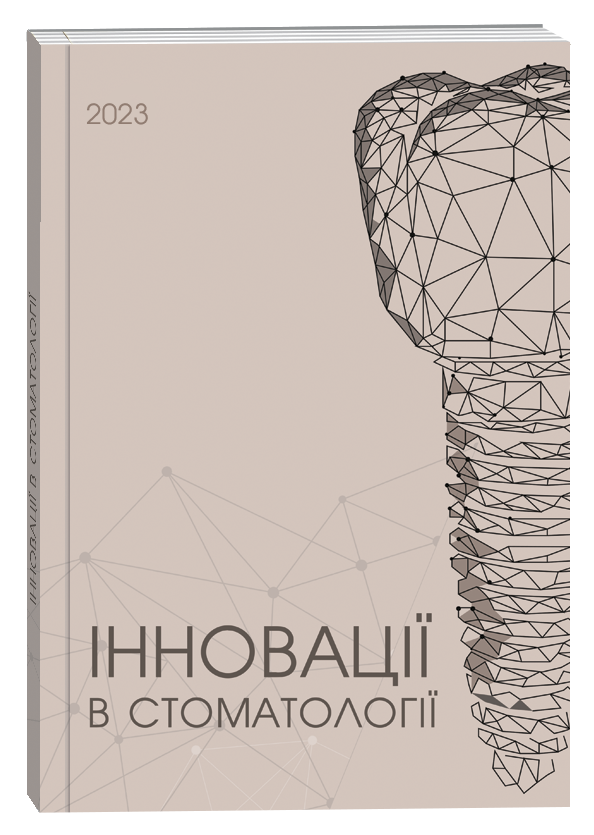EFFECTIVENESS OF MESIAL OCCLUSION TREATMENT IN PATIENTS WITH MAXILLARY DEVELOPMENTAL DEFICITS USING FIXED APPLIANCES IN COMBINATION WITH COMPACTOSTEOto mY SURGERY
DOI:
https://doi.org/10.35220/2523-420X/2024.2.13Keywords:
upper jaw, treatment, fixed appliances, adolescents, developmental deficitAbstract
The treatment of mesial occlusion in patients with maxillary developmental deficits is an important task of modern orthodontics, especially in adolescents. Compactosteotomy, as a minimally invasive surgical method, accelerates orthodontic treatment, allowing to achieve significant results in bite correction in a shorter time. The purpose of the study was to investigate the effectiveness of mesial occlusion treatment in patients with maxillary developmental deficits using fixed appliances in combination with compactosteomy surgery. Materials and methods. The study involved 23 patients with a permanent bite and incomplete growth, aged 13 to 18 years. The patients had a skeletal mesial occlusion, partially or completely due to a deficit in the development of the upper jaw, and had agenesis of the lateral incisors of the upper jaw. Patients were treated with fixed appliances in combination with compactosteomy surgery. A statistically significant difference between alternative quantitative features with a distribution corresponding to the normal law was evaluated using Student's t-test. The difference was considered statistically significant at p<0.01. Research results. It has been established that the use of fixed orthodontic appliances in combination with compactosteotomy in patients with a mesial bite and developmental deficits of the upper jaw allows to achieve significant skeletal changes and create the necessary space for proper placement of teeth. Conclusions. The combined use of fixed technique and compactosteotomy provides effective forward movement of point A, which is expressed in a significant increase in the ANB angle and normalization of the WITS index. This allows achieving stable results of mesial occlusion treatment, avoiding unwanted complications and creating the necessary space in the dentition without excessive cursing of the incisors.
References
de Lira Ade L., Prado S., Araújo M.T., Sant'Anna E.F., Ruellas A.C. Distal movement of upper permanent molars using midpalatal mini-implant. Dental Press J Orthod. 2013 Mar 15. Vol. 18. № 2. P. 18.e1-5. doi: 10.1590/s2176-94512013000200006
Gianelly A.A. Distal movement of the maxillary molars. Am J Orthod Dentofacial Orthop. 1998 Jul. Vol. 114. № 1. P. 66–72. doi: 10.1016/s0889-5406(98)70240-9. PMID: 9674683
Alshammari A., Almotairy N., Kumar A., Grigoriadis A. Effect of malocclusion on jaw motor function and chewing in children: a systematic review. Clin Oral Investig. 2022 Mar. Vol. 26. № 3. P. 2335–351. doi: 10.1007/s00784-021-04356-y. Epub 2022 Jan 5. PMID: 34985577; PMCID: PMC8898242.
De Ridder L., Aleksieva A., Willems G., Declerck D., Cadenas de Llano-Pérula M. Prevalence of Orthodontic Malocclusions in Healthy Children and Adolescents: A Systematic Review. Int J Environ Res Public Health. 2022 Jun 17. Vol. 19. № 12. P. 7446. doi: 10.3390/ijerph19127446. PMID: 35742703; PMCID: PMC9223594
Londono J., Ghasemi S., Moghaddasi N., Baninajarian H., Fahimipour A., Hashemi S., Fathi A., Dashti M. Prevalence of malocclusion in Turkish children and adolescents: A systematic review and meta-analysis. Clin Exp Dent Res. 2023 Aug. Vol. 9. № 4. P. 689–700. doi: 10.1002/cre2.771. Epub 2023 Aug 14. PMID: 37574975; PMCID: PMC10441606
Caruso S., Nota A., Ehsani S., Maddalone E., Ojima K., Tecco S. Impact of molar teeth distalization with clear aligners on occlusal vertical dimension: a retrospective study. BMC Oral Health. 2019 Aug 13. Vol. 19. № 1. P. 182.
doi: 10.1186/s12903-019-0880-8. PMID: 31409348; PMCID: PMC6692944
Köle H. Surgical operations on the alveolar ridge to correct occlusal abnormalities. Oral Surg Oral Med Oral Pathol. 1959 May. Vol. 12. № 5. P. 515–29 concl. doi: 10.1016/0030-4220(59)90153-7. PMID: 13644913
Frost H.M. The regional acceleratory phenomenon: a review. Henry Ford Hosp Med J. 1983. Vol. 31. № 1. P. 3–9. PMID: 6345475
Kuroiedova V.D., Petrova A.V., Rud Y.V. European position on clinical practice of extraction and nonextraction therapy in orthodontics. The Medical and Ecological Problems. 2019. Vol. 23. № 3-4. P. 32–6. https://doi.org/10.31718/mep.2019.23.3-4.08
Paranna S., Shetty P., Anandakrishna L., Rawat A. Distalization of Maxillary First Permanent Molar by Pendulum Appliance in Mixed Dentition Period. Int J Clin Pediatr Dent. 2017 Jul-Sep. Vol. 10. № 3. P. 299–301. doi: 10.5005/jp-journals-10005-1454. Epub 2017 Feb 27. PMID: 29104393; PMCID: PMC5661047
Kinzinger G.S., Wehrbein H., Gross U., Diedrich P.R. Molar distalization with pendulum appliances in the mixed dentition: effects on the position of unerupted canines and premolars. Am J Orthod Dentofacial Orthop. 2006 Mar. Vol. 129. № 3. P. 407–17. doi: 10.1016/j.ajodo.2005.12.004. PMID: 16527638
Bolton W.A. The clinical application of a tooth-size analysis. Am J Orthod. 1962 Jul. Vol. 48. № 7. P. 504-29. https://doi.org/10.1016/0002-9416(62)90129-X
Рогач І.М., Керецман А.О., Сіткар А.Д. Правильно вибраний метод статистичного аналізу – шлях до якісної інтерпретації даних медичних досліджень. Науковий вісник Ужгородського університету. 2017. Вип. 2. С. 124–28.








